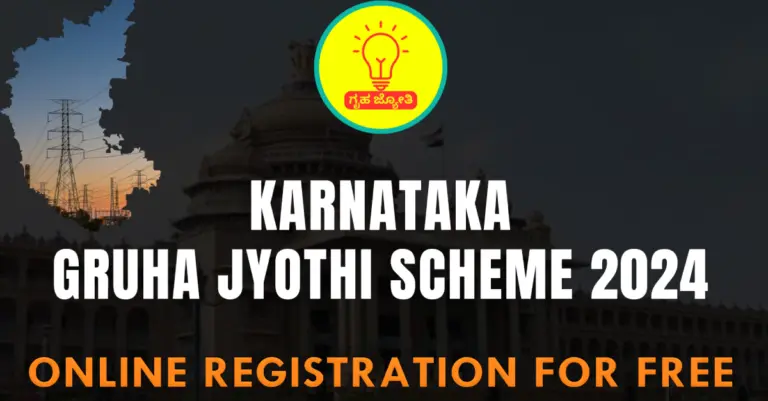Discover the ATMA Scheme—empowering agriculture with technology. Know more for sustainable farming and rural development
Agricultural Technology Management Agency (ATMA) Scheme – Overview
The Agricultural Technology Management Agency (ATMA) Scheme, formally known as the “Support to State Extension Programmes for Extension Reforms,” is a centrally sponsored scheme in India launched in 2005. It aims to decentralize and revamp the agricultural extension system by making it more farmer-driven and accountable. You Can Know more about Agricultural Technology Management Agency (ATMA) Scheme in this blog!
Objectives of ATMA
The key objectives of the ATMA Scheme include:
- Making the extension system farmer-centric: Farmers’ needs and priorities are at the forefront of planning and delivering extension services.
- Improving access to latest agricultural technologies and best practices: ATMA acts as a bridge between research institutions and farmers, disseminating relevant knowledge and innovations.
- Strengthening institutional linkages and coordination: ATMA fosters collaboration between various stakeholders involved in agriculture, including government agencies, research institutions, NGOs, private sector players, and farmer groups.
- Promoting adoption of sustainable agricultural practices: ATMA emphasizes sustainable land and water management, crop diversification, and integrated pest management.
- Empowering farmers through capacity building: ATMA conducts training programs, demonstrations, field visits, and other activities to enhance farmers’ skills and knowledge.
Activities of ATMA Scheme
Some of the main activities undertaken by ATMA include:
- Formation and activation of Farmer Interest Groups (FIGs): These groups of 11-25 farmers act as platforms for knowledge sharing, peer learning, and collective action.
- Organizing training programs and demonstrations: ATMA conducts trainings on various aspects of agriculture, including crop production, livestock management, pest control, and financial management. It also organizes demonstrations showcasing successful farming practices.
- Facilitating exposure visits and knowledge exchange: ATMA helps farmers visit successful farms and agricultural institutions to learn from others’ experiences.
- Organizing Kisan Melas and other agricultural events: Kisan Melas provide a platform for farmers to interact with experts, access inputs and technologies, and market their produce.
- Preparing and implementing district-level agricultural plans: ATMA works with stakeholders to develop strategic plans for agricultural development in the district.
- Monitoring and evaluating extension activities: ATMA regularly monitors and evaluates the effectiveness of its activities to ensure they are meeting farmers’ needs and achieving desired outcomes.
The ATMA Scheme has played a significant role in improving the agricultural extension system in India, leading to increased awareness and adoption of technologies, improved farm productivity, and enhanced livelihoods for farmers.
Implementation Guidelines Under ATMA
State Level
- State Nodal Agency (SNA): Headed by the Commissioner/Director of Agriculture, the SNA is responsible for overall coordination, policy guidance, and monitoring of ATMA.
- State Agricultural Management and Extension Training Institute (SAMETI): Provides training and capacity building to ATMA functionaries.
- State Level Sanctioning Committee (SLSC): Approves State Extension Work Plans (SEWPs), which guide ATMA activities in alignment with state agricultural priorities.
District Level
- District Agricultural Technology Management Agency (DATMA):
- Led by a District Project Director (DPD), who oversees the implementation of ATMA in the district.
- Develops District Agricultural Action Plans (DAAPs) based on local needs and priorities.
- Coordinates with line departments, research institutions, and other stakeholders.
Block Level
- Block Technology Team (BTT):
- Core unit of ATMA, comprising a Block Technology Manager (BTM), Subject Matter Specialists (SMSs), and Farmer Friends (FFs).
- Interacts directly with farmers, providing technical advice, conducting training, and organizing demonstrations.
- Prepares Block Action Plans (BAPs) based on farmers’ needs.
Village Level
- Farmer Interest Groups (FIGs):
- Groups of 11-25 farmers who meet regularly to discuss agricultural issues, share knowledge, and plan collective activities.
- Serve as the primary platform for knowledge dissemination and adoption of technologies at the grassroots level.
Allocation of Funds Under ATMA
- Central Share: 90% of the total project cost (initially, now varies based on state and category).
- State Share: 10% of the total project cost.
- Fund Flow: Funds are released from the central government to the State Nodal Agency, which then allocates funds to districts and blocks based on their approved plans.
What Are the Benefits of the ATMA scheme?
The ATMA scheme offers a wide range of benefits for both individual farmers and the agricultural sector as a whole. Here are some key benefits to consider:
Individual Farmer Benefits:
- Enhanced knowledge and skills: ATMA provides numerous training programs, demonstrations, and field visits that equip farmers with the latest information and techniques on crop production, livestock management, pest control, and other crucial aspects of agriculture. This empowers them to make better decisions, adopt improved practices, and ultimately increase their productivity and profitability.
- Better access to technologies and resources: ATMA acts as a bridge between research institutions and farmers, facilitating the adoption of innovative technologies and improved seeds, fertilizers, and other inputs. This allows farmers to benefit from advancements in the field and address specific challenges facing their crops and soil conditions.
- Improved market access and information: ATMA helps farmers connect with markets and understand market trends through initiatives like Kisan Melas and other agricultural events. This provides them with better opportunities to sell their produce at fair prices and gain valuable insights into consumer demands.
- Higher income and livelihood security: The combination of increased knowledge, access to resources, and improved market access often leads to higher yields, better quality produce, and ultimately, increased income for farmers. This translates to improved livelihoods and enhanced food security for their families and communities.
- Empowerment and participation: ATMA actively encourages farmer participation in planning and decision-making processes through Farmer Interest Groups (FIGs). This gives farmers a voice in shaping agricultural policies and programs that directly impact their lives and livelihoods, fostering a sense of ownership and empowerment. Agricultural Technology Management Agency (ATMA) Scheme is very helpful for people!
Sector-Wide Benefits:
- Increased agricultural productivity and production: With farmers adopting improved practices and technologies, the overall agricultural productivity of the country increases. This contributes to higher food production, which is crucial for ensuring food security for the nation’s growing population.
- Sustainable agricultural practices: ATMA emphasizes resource conservation, soil health, and climate-resilient practices. This promotes sustainable agriculture, which is essential for long-term productivity and environmental protection.
- Stronger agricultural system: ATMA enhances coordination and collaboration between various stakeholders in the agricultural sector, including government agencies, research institutions, NGOs, and private players. This creates a more robust and efficient system that can effectively address the challenges facing Indian agriculture.
- Improved rural development: The success of ATMA in empowering farmers and increasing agricultural income contributes to overall rural development. This leads to improved standards of living, better infrastructure, and increased economic activity in rural areas.
Conclusion
Overall, the ATMA scheme plays a significant role in enhancing the knowledge, skills, and resources of Indian farmers, leading to increased productivity, income, and rural development. By promoting sustainable practices and fostering collaboration, ATMA helps build a stronger and more resilient agricultural sector for the future.
FAQs
How can farmers or agricultural stakeholders participate in the ATMA Scheme?
Farmers can participate in the ATMA Scheme by joining Farmer Interest Groups (FIGs) formed at the village level. These groups, typically consisting of 11-25 farmers, provide a platform for knowledge sharing, receiving training and technical advice from ATMA officials, and accessing resources. Stakeholders like NGOs, private sector companies, and research institutions can collaborate with ATMA at various levels, such as providing training programs, conducting demonstrations, and participating in planning and decision-making processes.
What kind of financial assistance does the ATMA Scheme provide to farmers?
The ATMA Scheme itself does not directly provide financial assistance to farmers. However, it facilitates access to various government schemes and programs offering subsidies, grants, and loans for agricultural activities. Additionally, ATMA may provide seed money or support for group activities undertaken by FIGs.
Are there specific eligibility criteria for individuals or organizations to benefit from the ATMA Scheme?
Eligibility for benefits under ATMA depends on the specific program or initiative. Farmers joining FIGs typically need to be actively involved in agricultural practices in their village. Organizations collaborating with ATMA must demonstrate expertise and experience in relevant areas like training, technology dissemination, or market development.
How does the ATMA Scheme contribute to the overall development of agriculture?
The ATMA Scheme contributes to agricultural development in several ways: Empowering farmers: It equips farmers with knowledge, skills, and access to resources, leading to increased productivity and income. Promoting sustainable practices: It emphasizes resource conservation and climate-resilient methods, ensuring long-term sustainability. Strengthening the agricultural system: It fosters collaboration between stakeholders, leading to a more efficient and responsive system. Improving rural development: Increased agricultura
Can you explain the key components or focus areas of the ATMA Scheme?
Key components of the ATMA Scheme include: Farmer Interest Groups (FIGs): Platform for knowledge sharing and farmer participation. Training and capacity-building programs: Equipping farmers with skills and knowledge. Demonstrations and field visits: Showcasing best practices and innovative technologies. Market linkages and information: Facilitating access to markets and market trends. Planning and decision-making: Encouraging farmer participation in shaping agricultural policies.
How is the ATMA Scheme implemented at the state or district level?
The scheme operates through a multi-tiered structure: State Level: State Nodal Agency oversees implementation, coordinates with stakeholders, and approves state-level plans. District Level: District Agricultural Technology Management Agency (DATMA) implements the scheme, develops district-level plans, and coordinates with block and village levels. Block Level: Block Technology Team (BTT) interacts directly with farmers, conducts training, and prepares block-level plans. Village Level: Farmer Interest Groups (FIGs) serve as the primary platform for farmer participation and knowledge dissemination.
Are there training and capacity-building programs associated with the ATMA Scheme?
Yes, the ATMA Scheme offers a variety of training and capacity-building programs for farmers and other stakeholders. These programs cover various aspects of agriculture, including crop production, livestock management, pest control, financial management, and climate-resilient practices.
How can interested parties stay informed about updates and changes to the ATMA Scheme?
Interested parties can stay informed about the ATMA Scheme through various channels: State Nodal Agency and DATMA websites: Updated information on programs, activities, and contact details. ATMA publications and newsletters: Disseminating news, updates, and success stories. Kisan Melas and other agricultural events: Platforms for direct interaction with ATMA officials. Agricultural extension offices: Providing information and guidance to farmers.
Read more:-










